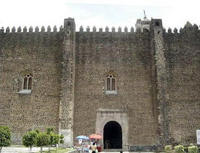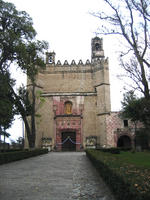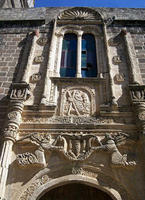You are in: North America -> Mexico -> Earliest 16th-Centur... , and traditional search or Image Gallery will yield results of this site only
Earliest 16th-Century Monasteries on the Slopes of Popocatepetl
| Site number: | 702 |
|
| Type of site: | Cultural | |
| Date: | 16th century | |
| Date of Inscription: | 1994 | |
| Location: | North America, Mexico, Morelos and Puebla States Municipalities: Atlatlauhcan, Cuernavaca, … | |
Up to 75 images are shown here. Click on each for more details or on Image Gallery for more images.
| Description: | The site’s 14 monasteries rest on the slopes of Popocatepetl, south-east of Mexico City. They have been conserved in admirably good condition and are fine examples of the architectural style that the first missionaries adopted. The missionaries (Franciscans, Dominicans and Augustinians) converted the indigenous populace to Christianity in the early 16th century. --WHMNet paraphrase from the description at WHC Site, where additional information is available. | |
| There are several monasteries near the Popocatépetl volcano in central Mexico which were built in the 16th century by members of the Franciscan, Dominican and Augustinian orders. They were a major factor in the Christianization of a very large population over a vast territory and in a short period of time. They are located in the municipalities of Atlatlauhcan, Cuernavaca, Hueyapan, Tetela del Volcán, Yautepec, Ocuituco, Tepoztlán, Tlayacapan, Totolapan, Yecapixtla and Zacualpan de Amilpas in the state of Morelos; and in the municipalities of Calpan, Huexotzingo and Tochimilco in the state of Puebla; all of these are within sight of Popocatépetl. In 1994 these monasteries were placed on the UNESCO list of World Heritage Sites, as the fourteenth Mexican site to receive such recognition. (There are currently 26 World Heritage Sites in Mexico and 2 more under consideration for inclusion in the list.) These monasteries are impressive in their structural austerity, with the main buildings box shaped and of imposing height, often overlooking the local habitations. Additionally, the buildings are surrounded with turreted strongwalls, giving an even more imposing air. --Wikipedia. Text is available under the Creative Commons Attribution-ShareAlike License. | ||
| Source: | http://whc.unesco.org/en/list/702 | |
| Source2: | http://whc.unesco.org/en/list/702/video | |
| Reference: | 1. UNESCO World Heritage Center, Site Page. | |













